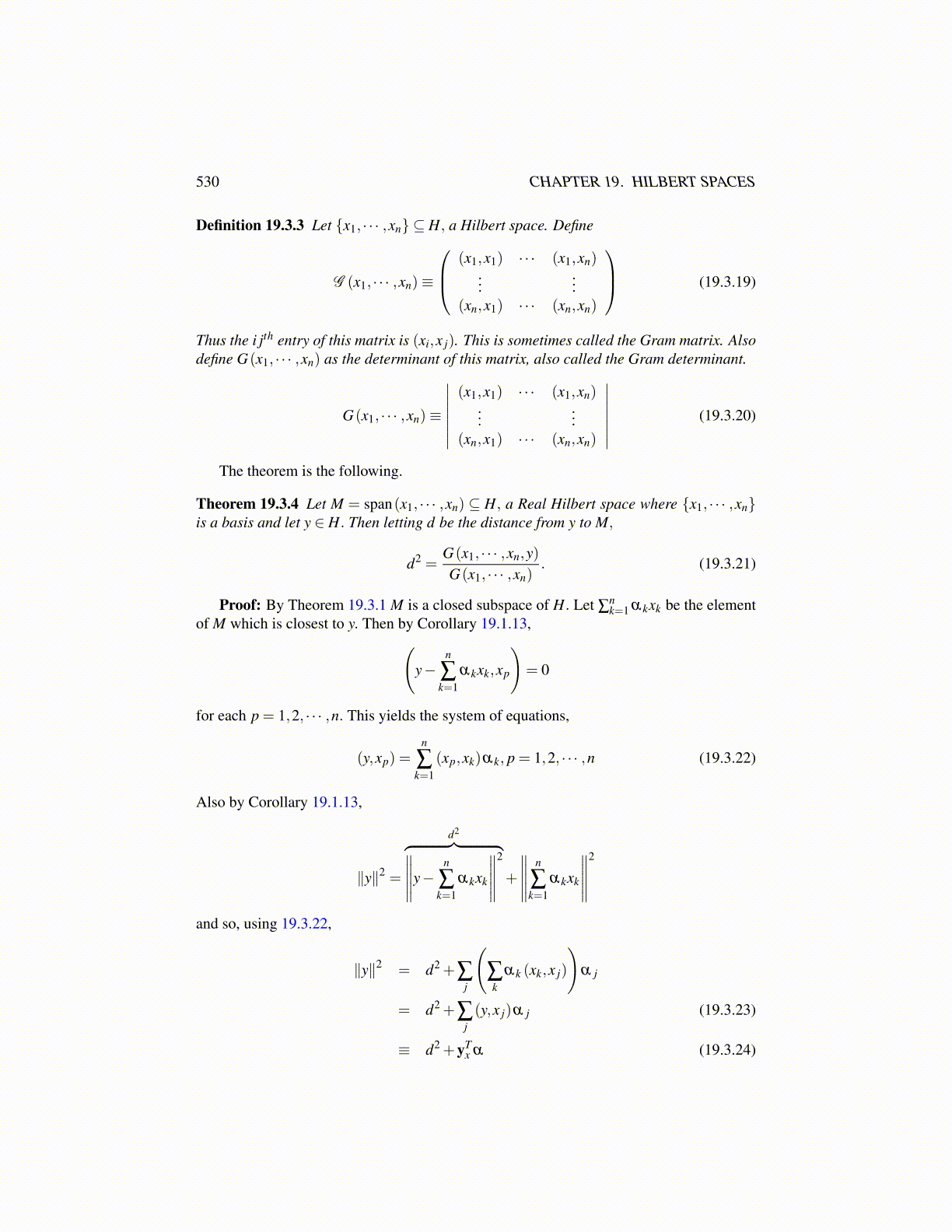
530 CHAPTER 19. HILBERT SPACES
Definition 19.3.3 Let {x1, · · · ,xn} ⊆ H, a Hilbert space. Define
G (x1, · · · ,xn)≡
(x1,x1) · · · (x1,xn)...
...(xn,x1) · · · (xn,xn)
(19.3.19)
Thus the i jth entry of this matrix is (xi,x j). This is sometimes called the Gram matrix. Alsodefine G(x1, · · · ,xn) as the determinant of this matrix, also called the Gram determinant.
G(x1, · · · ,xn)≡
∣∣∣∣∣∣∣(x1,x1) · · · (x1,xn)
......
(xn,x1) · · · (xn,xn)
∣∣∣∣∣∣∣ (19.3.20)
The theorem is the following.
Theorem 19.3.4 Let M = span(x1, · · · ,xn) ⊆ H, a Real Hilbert space where {x1, · · · ,xn}is a basis and let y ∈ H. Then letting d be the distance from y to M,
d2 =G(x1, · · · ,xn,y)G(x1, · · · ,xn)
. (19.3.21)
Proof: By Theorem 19.3.1 M is a closed subspace of H. Let ∑nk=1 αkxk be the element
of M which is closest to y. Then by Corollary 19.1.13,(y−
n
∑k=1
αkxk,xp
)= 0
for each p = 1,2, · · · ,n. This yields the system of equations,
(y,xp) =n
∑k=1
(xp,xk)αk, p = 1,2, · · · ,n (19.3.22)
Also by Corollary 19.1.13,
∥y∥2 =
d2︷ ︸︸ ︷∥∥∥∥∥y−n
∑k=1
αkxk
∥∥∥∥∥2
+
∥∥∥∥∥ n
∑k=1
αkxk
∥∥∥∥∥2
and so, using 19.3.22,
∥y∥2 = d2 +∑j
(∑k
αk (xk,x j)
)α j
= d2 +∑j(y,x j)α j (19.3.23)
≡ d2 +yTx α (19.3.24)